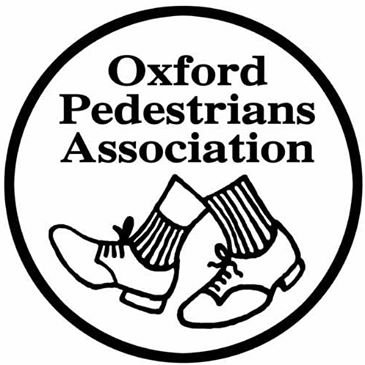Low Traffric Neighbourhoods
Notes of meeting to be circulated to OxPA membership
Attendees: Sushila Dhall (Chair), Keith Frayn, Don O’Neal, Peter Headicar, Ruth Davis, Jamie Bloomfield, Charlie Hicks, Chris Cowley (Secretary)
Scott Urban spoke about the implementation of the proposals for Low Traffic Neighbourhoods before a general discussion. Members had been invited to watch Scott’s presentation to the Civic Society on youtube prior to the meeting.
Scott preferred the term ‘Normal Traffic Neighbourhoods’ to highlight that these areas would have the volume of traffic which they had been designed for. He also highlighted several examples of modal filters throughout the city which had existed for many years and which do not arouse any protests (eg Freelands Road, Meadow Lane, Bateman Road). Further examples can be found on Danny Yee’s blog wanderingdanny.com. He also cited Rose Hill which is a large estate with only one point of vehicular access and which has not created traffic problems.
There are currently 9 proposed LTN’s to be delivered in 2 tranches. The first ones are Florence Park, Temple Cowley and Church Cowley which will be introduced once Tranche 2 money is received from the Dept of Transport. The others would have a longer timeline. Cambridge have already introduced some LTNs and their experience suggests taking things slower but doing them better.
There are two ways of implementing LTNs: Trial or Embed. Trial LTNs are installed on a temporary basis and consultations take place afterwards, making them easier to ‘sell’. Consultation for Embedded LTNs takes place before implementation and are subject to a democratic vote. Once implemented, they are then permanent.
After this presentation, there was a discussion in which the following points were raised:
- Local areas could self-finance modal filters but only with the permission of the County Council.
- Rising bollards are expensive and are often faulty. ‘Permanent’ bollards are designed to be run over by a fire engine in an emergency.
- Modal filters should be a feature of new developments. These permeable barriers are preferable to closed off cul-de-sacs.
- There was discussion about who would be able to vote on the implementation of LTNs: residents only; residents of nearby streets and peripheral roads who benefit from ‘rat runs’; the wider community; students? There was a suspicion that the recent proposal for bus gates had been opposed by commuters, rather than Oxford residents.
- Is there a danger that displaced traffic could create more pedestrian issues on the main roads? Scott confirmed that most pedestrian problems are in residential areas but improvements to junctions and pedestrian crossings on A and B roads would also be necessary,
- If bus gates are not introduced alongside LTNs could buses continue to be unreliable due to traffic congestion?
- The current system is weighted towards car drivers, as evidenced by cheap parking in the Westgate Centre.
- School traffic remains a big problem in residential areas. The hope is that more children will walk or cycle to school once LTNs are introduced in their area. There was speculation about how many children are taken to school by car in Rose Hill (an area without through traffic).
- The current time may not be a good moment to introduce changes since many people are feeling sensitive and stressed due to the restrictions and uncertainties of covid-19.
- Some people are reluctantly using their cars at present as public transport feels risky. Others without cars or access to cars report that walking is challenging due to high volumes of traffic and too little pavement space.
